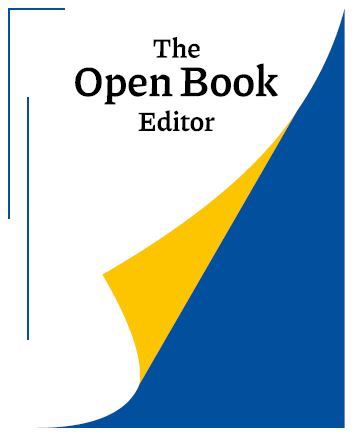The last days of November are fast approaching and, if you’re participating in National Novel Writing Month, you’re probably wondering what to do after NaNoWriMo ends. Should you edit right away? Take a break? Write something else? Start making a list of literary agents or publishing houses to contact? Hire an artist to design a cover so you can self-publish?
It’s natural to wonder what comes next in your writing journey; NaNoWriMo has got you all excited about writing your book and, now, you want to keep up the momentum. Well, the answer very much depends on you, your book, and its current state. It’s great that you are feeling passionate about your book and want to put it into the hands of readers. At the same time, it’s important to be cautious and not rush something before it’s ready. To help you figure out what’s right for your book, here are 5 things you can do after NaNoWriMo ends.
Note: This article has been updated as of 20/11/23
1. Finish your novel

Even if you do hit the standard NaNoWriMo goal of 50k words, it’s unlikely that your novel is completely finished. Keep in mind that this depends on the genre of your book. Word counts tend to vary depending on whether you’re writing non-fiction, sci-fi, romance, and so on. Find out what the standard industry word count is for your genre and do your best to stick to it, especially if this is your debut book.
Most books range 70,000 and 100,000 words (again, this depends on the genre). Hence, even if your book is at 50k words by the end of NaNoWriMo, it’s probably not done quite yet. If you didn’t manage to finish your first draft by the end of the month, don’t stress. The first few weeks after NaNoWriMo ends is a great time to buckle down and write while the momentum is with you.
(Of course, writing “rules” are just guidelines and there are always exceptions. If all you need is 60,000 words to tell your story, then so be it. Likewise, 120,000-word tomes can sometimes be the right word count. But challenge yourself to avoid overly small or big word counts if possible. Experienced authors might get away with it because their publishers trust their books will sell regardless. However, short or long books by unknown, debut authors are considered a risky investment.)
If you’re struggling to finish your book, it might be a good idea to pause and outline the rest of your story (if you don’t already have an outline). An outline will give you the extra push you need to finish your novel after NaNoWriMo ends. At this point, try not to worry too much about whether you have complex characters or believable dialogue. Hold on to that NaNoWriMo mentality and simply write until you reach The End. You’ll have time later to go back, tighten up your prose, and make your story better.
2. Take a break

The first thing to do once NaNoWriMo is over is take a second to celebrate. No matter what your writing goals were for the month, or if you accomplished them or not, participating in NaNoWriMo is a big deal! Once you finish your book, treat yourself to some time off. It can be hard to self-edit when you’re too close to the work. Therefore, it’s always a good idea to step away from your manuscript for a bit before diving back in.
You may be impatient to edit your book and send it out to all your favourite agents (or self-publish it) right after NaNoWriMo ends. However, this is never a good idea. Patience is a key part of the writer’s life and distance can make the mind clearer. Put your manuscript in a drawer for at least two weeks; a few months if possible. In the meantime, catch up on your TBR list, try writing a different genre or format (such as short stories), or simply veg out on a show you’ve had on hold during NaNoWriMo.
3. Do an overall review of your book

Now that you’ve finished your book and taken a much-deserved break, it’s time to do a cursory review of your manuscript. Your first draft will be a mess, and that’s okay. NaNoWriMo is a fast-paced event and the goal is to develop a daily writing habit. Hence, you probably didn’t have much time for editing.
The brilliant William Faulkner once said about first drafts, “Get it down. Take chances. It may be bad, but it’s the only way you can do anything really good.” This is a great reminder that it’s normal to feel your first draft isn’t good, but you can make it better! Even best-selling NaNoWriMo novels were a total mess in that first, post-NaNo draft.
Do a cursory review of your book by sitting down and reading it from start to finish. Keep a notebook to hand and take note of any discrepancies, plot holes, and major issues in your book. This is a perfunctory review, so don’t let yourself get bogged down with editing details just yet. The purpose is to remind yourself of your overall plot and what you’re hoping to convey with your story. You’ll also want to take notes to use in the editing process later.
4. Self-edit your book

Now comes the nitty gritty part: self-editing your book. You shouldn’t skip this part of the writing process; even professional writers must self-edit their books. Look over the notes from your cursory review to remind yourself of the big-picture issues. Be purposeful in your approach to editing and choose specific things to focus on in each round. Remember: you will need to do several rounds of self-editing before your book is ready to be read by someone else.
In the first round of self-edits, you’ll want to focus on closing big plot holes and fixing inconsistencies in your book. This means you shouldn’t worry about small mistakes and details right away. If you discover that you’re making some major changes, don’t worry. Rewriting is a normal part of self-editing, and may be required after NaNoWriMo is over. Big-picture edits may take up to two rounds of self-editing. Then the next round can be dedicated to the smaller details, such as typos and grammar mistakes.
5. Have someone else read your book

Even if you take a break from your book, it’s still easy to miss mistakes or changes that may make your manuscript better. This is where outside readers come in. Hopefully, you’ve made some friends through NaNoWriMo who are happy to beta read and critique your work. If not, don’t worry. You can find beta readers through the #WritingCommunity hashtag on social media or on the r/writers subreddit.
What if I don’t have a writing group?
A writing group can be invaluable for any writer—not just because you’ll have other writers who can read and critique your work, but because a solid writing community is important! However, a writing group or beta readers might not work for every writer. If this is the case, you might consider hiring a professional book editor instead.
The editing, querying, and publishing process can be overwhelming, and it helps to have a knowledgeable professional in your corner with the expertise to make your manuscript the best it can be. Depending on your needs and budget, you can find an editor to do different types of editing—from developmental editing to copy-editing and proofreading, and everything in between. At The Open Book Editor, our excellent book editors can ensure that your manuscript looks polished and professional, thus increasing its chances of success, whether you choose to query or self-publish.


